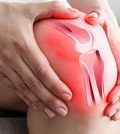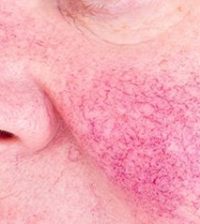- Big Health Care Disparities Persist Across the U.S., New Report Finds
- Teens Often Bullied Online About Their Weight: Study
- Work That Challenges Your Brain Helps You Stay Sharp With Age
- Urine Test Might Spot Head-and-Neck Cancers Early
- Many Seniors Are Overmedicated, But ChatGPT Might Prevent That
- Antipsychotics May Do Great Harm to People With Dementia: Report
- Two-Drug Combo Curbs Drinking for People Battling Severe Alcoholism
- Most Homeless Americans Are Battling Mental Illness
- FDA Recalls Heart Failure Devices Linked to Injuries and Deaths
- COVID Does Not Spur Asthma in Kids, Study Finds
Could a Nitroglycerin Patch Ease Hot Flashes?

A new study on using nitroglycerin patches to help women with frequent hot flashes caused by menopause has delivered mixed results.
The benefits of wearing these patches — long used as chest pain medication — were modest. They also were short-lived, with any benefits appearing to wear off over time, according to researchers from the University of California, San Francisco (UCSF).
Still, this approach to finding new treatments may be helpful.
“The bottom line is that our study doesn’t allow us to recommend nitroglycerin skin patches as a strategy for consumers to suppress hot flashes in the long term,” said lead author Dr. Alison Huang, an internal medicine physician at UCSF Health and a clinical epidemiologist.
“But our study suggests that there may be promise in this overall approach to treating a common condition in midlife women. The menopause field is still lacking in effective treatment approaches that don’t involve hormones,” Huang said in a UCSF news release.
Huang’s team tested the benefits of continuously wearing a nitroglycerin patch for menopausal women experiencing at least seven hot flashes a day.
This study enrolled 141 women aged 40 to 62 who were in late menopausal transition or postmenopausal. The women wore either the nitroglycerin or placebo patches for 24 hours a day, recording their hot flashes at weeks five and 12.
The researchers found that the benefits of nitroglycerin compared to placebo did not extend past 12 weeks. Some women also experienced headaches.
“Nitroglycerin has been used for decades to treat chest pain in patients with coronary disease because it can increase blood flow to the heart when used for only 12 hours at a time,” Huang said.
“But lab studies suggested that if nitroglycerin is used continuously, it could prevent or suppress the type of rapid, increased blood flow under the skin that causes sensations of heat and flushing during hot flashes during menopause,” she added. “In this line of research, we repurposed a medication that has been used for close to a century for a different indication.”
Those symptoms, including intense flushing and sweating, are common in menopause. More than two-thirds of menopausal women in the United States experience them, sometimes for years.
Hormone therapy can be highly effective at reducing or suppressing these symptoms. Yet, that comes with risks, including for some cancers, and women have long asked for alternatives.
Most treatments for hot flashes target brain mechanisms. This one was targeted at blood vessels throughout the body.
The trial was supported by the U.S. National Institute on Aging, with the findings published June 5 in JAMA Internal Medicine.
More information
The U.S. National Institute on Aging has more on hot flashes.
SOURCE: University of California, San Francisco, news release, June 5, 2023
Source: HealthDay
Copyright © 2024 HealthDay. All rights reserved.










